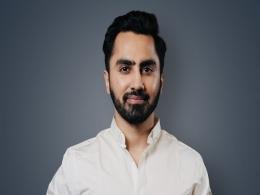Global investment group HQ Capital manages about $6 billion in private equity capital commitments. The firm has invested in 363 PE funds globally since inception in 1989 and has huge exposure to Asia including India. Lucian Wu, managing director at the firm, who will be a speaker at VCCircle’s flagship VCCircle India Limited Partners Summit 2016, shares his views about India as an investment destination and the challenges investors and PE funds face in the country.
Considering that you will be attending the panel on changing dynamics between limited partners (LPs) and general partners (GPs) at the event, how has your outlook towards them changed in the last few years?
I have been in private equity in Asia for the last 21 years and first 14 years of that I was a GP for a while. I think there has been a lot of change. In India there have been great promises but I think so far it has not delivered to expectations in terms of exits. Entry valuations are an issue, too. I also think India is a market where you have to get exposure to the right sectors. The consumer sector is interesting to me and even the internet sector. In terms of changing dynamics, it is not a must-have market compared to China within Asia. If you are in Asia and invest in Asian private equity then China is something you need to consider but I think India is not quite there yet. The GP community has to make a strong case to show why people should invest in India.
Has your outlook towards India changed in any way?
With the Indian rupee looking a bit more stable than three-four years ago, and with the new prime minister now in, things have improved somewhat as compared to two-three years ago. If I remember correctly, earlier India was a market where there were lot of macro headwinds and negative sentiment. Things have improved to a large extent. But given the overall volatility in the Asian region, I think it is still a lot of work to be done to attract capital. Things are going in the right direction now.
Do you see any substantial policy reforms after the Narendra Modi government took charge?
There have been lot of discussions about it and lot of positive noises about it. Sometimes these changes happen slower than expected. When anyone is selecting a sector or company to invest into, the less government and fewer regulations we have, the better it is. To a large extent the government is doing the right thing, making the right noises but it is taking time.
Going by your conversations with Indian GPs, what do you think are the main challenges for foreign investors to earn better returns?
The number one challenge I see is the currency. With a strong US dollar, emerging markets currencies have been taken a beating of late. One of the challenges is for the GP to think as to how to hedge foreign currency. Second, how does a GP think about value addition and being disciplined about entry valuations? The GP will need to demonstrate thoughtfulness when entering an investment to know what the available exit routes are. The exit strategy is very important for a GP because capital nowadays is much commoditised.
What is your investment strategy in India?
Growth equity is our core strategy for India. We would like to see more buyout deals in the market. Changes are happening but not as quick as expected. Within Asia, there is the developed Asia--which is Korea, Japan, Taiwan, the Philippines and Singapore--where you see more majority control by investors whereas in other parts of Asia including China and India you see majority as growth equity. Our strategy for India, in addition to growth equity, is to go for secondary deals. With entry valuations in India high, I think one way to get exposure to India is doing secondary transactions. India is a good market for secondary strategy.
What is your exposure to India?
The amount of funds we have committed to Indian PEs would be 15 per cent of our total exposure to Asia. Our global assets under management would be $12 billion, which is equally divided in private equity and real estate.
A lot of LPs have opted for a direct or co-investing model in India. Would you prefer it?
We are investing but mostly through our co-investment programme. Our strategy on that is that we very much like to go alongside our GPs where we feel comfortable on the quality of the GP. It is important to make investments through co-investments.






